The reason that pilgrims and tourists alike come to Xiahe is to visit the Labrang Monastery, an ever-expanding complex of temples, schools and accommodation that now resembles a sprawling village.
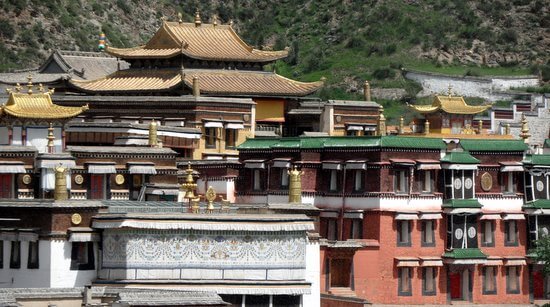
The Labrang Monastery is one of the six important temples of Gelukpa, or the Yellow Hat Sect of Tibetan Buddhism, and the most important temple outside Tibet. It’s now home to over a thousand monks who have come to attend one of the six institutes of learning.
It’s formal name is Gandan Shaydrup Dargay Tashi Gyaysu Khyilway Ling, but I’ll stick to Labrang
The roofs of the elegantly carved wooden main buildings are coated with gold that some would say sparkles in the sunlight. Now 300 years old, construction work remains on going in every corner, yet the whole area remains peaceful somehow.
The 4km circumference of the temple is lined with prayer wheels – the spinning of each is equivalent to saying the multiple prayers contained within. Along the outer walls these are about eighteen inches in diameter, but occasional towers contain much larger wheels, up to 5 feet across. The devotees walk around the entire temple on a daily basis, spinning (most of) the wheels. Experienced worshipers wear gloves, as the heavy drums seem prone to splintering.
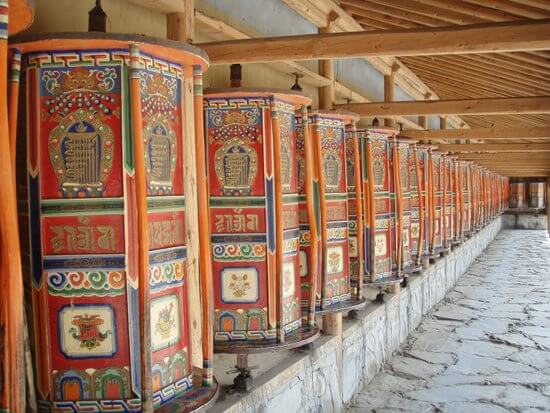
Prayer Wheels surrounding the temple
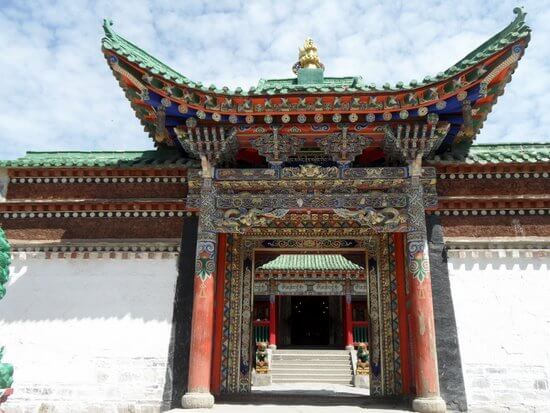
The main entrances to the temple, of which there are many, are surrounded by ornately carved and painted gates.
Inside are the 18 halls, 6 institutes of learning, a white stupa and a golden stupa that can be climbed for an overview of the sight.
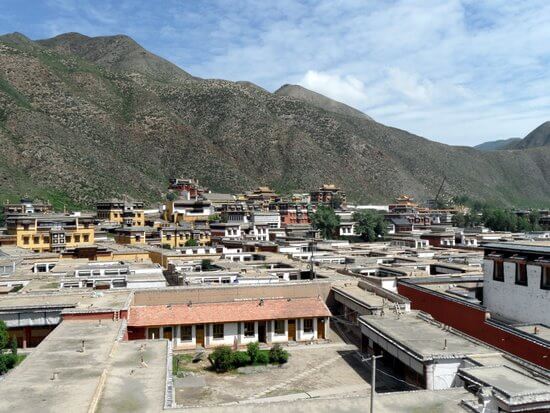
View from the golden stupa at the Labrang Monastery in Xiahe
The largest of these halls is the 20m high, six storeys, Shouxi Prayer Hall that is home to a massive statue of Sakimonia. Others have thousands of statues of Buddha made of gold, silver, copper, ivory, sandalwood, jade and crystal, many inlaid with pearls, jadeite, agate and diamonds.
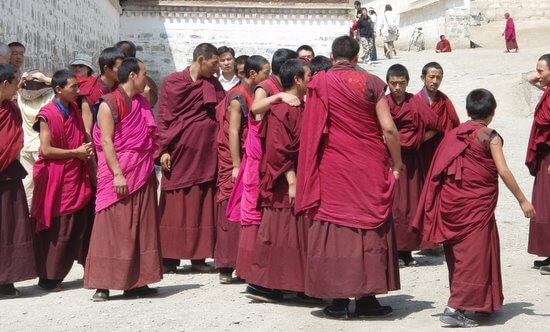
I was also surprised to discover how much the resident Buddhist monks can earn compared to their penniless counterparts in South East Asia – they get donations from the temple and in some cases receive a salary from the government as an insurance against causing any trouble. I’d previously noticed when visiting the Lama Temple in Beijing that a couple of the senior monks were wearing Rolexes or similar, but even down in a small town like Xiahe certain monks appeared to have some expensive accessories.
This contrasts somewhat with the pilgrims walking round the outside, many of whom can’t afford shoes or a place to sleep.
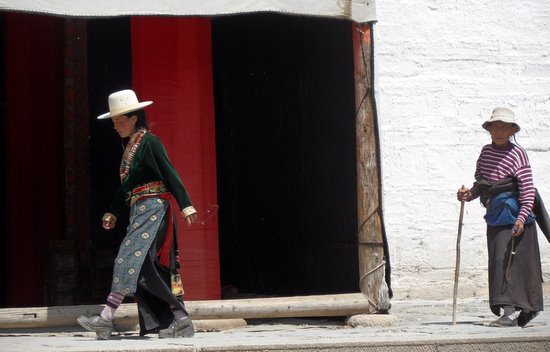






Pingback: The Perils of Drinking Rice Wine for Lunch - Lintao, Gansu Province
thx for the info, i haven’t been to there yet but planning to go there beginning of next year spring. will post some of my insights after i return from my trip.